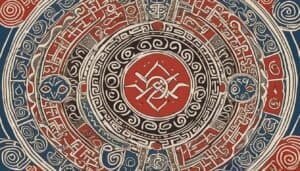Introduction
In Tibetan Buddhism, the snow leopard is more than just a majestic animal; it is a potent symbol deeply embedded in spiritual practices and cultural beliefs. Revered for its strength, mystery, and elusive nature, the snow leopard embodies spiritual qualities that resonate with the teachings of Tibetan Buddhism
This article explores the multifaceted symbolism of snow leopards within this spiritual tradition, examining their depiction in art, their association with deities, and their role as protectors. We will also delve into their sacred connection with Tibetan culture, their influence on rituals, and their reflection of Tibet’s spiritual landscape
The Symbolic Role Of Snow Leopards In Tibetan Buddhism
Snow leopards hold a significant place in Tibetan Buddhism, where they are revered not only as powerful and elusive creatures but also as spiritual symbols
These majestic animals, native to the rugged landscapes of the Himalayas, embody qualities that align closely with Buddhist teachings and the spiritual life of Tibet. Their solitary nature, strength, and ability to navigate the harshest environments with grace and poise make them ideal representations of inner strength, resilience, and the pursuit of enlightenment
In Tibetan Buddhism, the snow leopard is often seen as a guardian, a spiritual guide, and a symbol of protection against evil forces. The reverence for snow leopards is reflected in various aspects of Tibetan culture, including art, literature, and religious practices, where they are often depicted in ways that highlight their sacred significance
Snow Leopards In Tibetan Art And Iconography
In Tibetan art and iconography, snow leopards are frequently portrayed as powerful and mystical creatures, often depicted alongside deities or as guardians of sacred spaces
Their representation in thangkas (Tibetan Buddhist paintings on cotton or silk) and statues conveys their spiritual importance. The snow leopard’s presence in these artworks symbolizes not only physical protection but also the safeguarding of spiritual wisdom and purity
The fierce yet serene expression of the snow leopard in these depictions is intended to evoke a sense of calm strength and unwavering focus, qualities that are highly valued in Tibetan Buddhist practice
Moreover, snow leopards are sometimes depicted in the company of dharmapalas, or protective deities, who are believed to ward off evil and protect the Dharma (Buddhist teachings)
In these contexts, the snow leopard serves as a companion to these deities, reinforcing its role as a protector and guardian within the spiritual realm. The careful attention to detail in the depiction of snow leopards in Tibetan art highlights their revered status and the deep respect they command within the Buddhist tradition
Spiritual Qualities Of The Snow Leopard
The spiritual qualities attributed to snow leopards in Tibetan Buddhism are closely linked to their natural characteristics. Their solitary and elusive nature is seen as a metaphor for the spiritual journey, which often requires detachment from the material world and a focus on inner development
The snow leopard’s ability to thrive in the remote, high-altitude regions of the Himalayas is also symbolic of spiritual ascension, representing the practitioner’s journey toward higher states of consciousness and enlightenment
Snow leopards are also associated with mindfulness and meditation. Their patient and deliberate movements are seen as embodying the calm and focused mind that is cultivated through meditation. In this sense, the snow leopard serves as a reminder of the importance of mindfulness in the spiritual path, encouraging practitioners to develop a clear and steady mind in their pursuit of enlightenment
In addition, the snow leopard’s strength and resilience in the face of adversity are qualities that resonate deeply within the Tibetan Buddhist tradition. These traits are viewed as essential for overcoming the challenges and obstacles that one encounters on the path to spiritual awakening
The snow leopard’s ability to move through difficult terrain with grace and poise is a powerful metaphor for navigating the complexities of life with wisdom and compassion
Snow Leopards As Protectors In Tibetan Buddhism
In Tibetan Buddhism, snow leopards are revered as protectors, both in the physical and spiritual sense. They are believed to guard sacred spaces, including monasteries and remote meditation retreats, from negative influences and harmful spirits
This protective role is deeply rooted in the belief that snow leopards possess a unique spiritual power that enables them to ward off evil and maintain the purity of the sacred environment
The idea of the snow leopard as a protector is also reflected in Tibetan folklore and mythology, where these animals are often portrayed as guardians of the natural world and the spiritual realm
In some stories, snow leopards are said to protect hidden valleys or sacred sites from intruders, ensuring that these places remain untouched by corruption or desecration. This belief underscores the snow leopard’s role as a guardian of both physical and spiritual sanctity, a role that is honored and respected within Tibetan culture
Furthermore, the snow leopard’s association with protection extends to the personal level, where it is believed to offer spiritual protection to individuals who invoke its power. In some Tibetan Buddhist practices, prayers and rituals are performed to call upon the snow leopard for protection and guidance, particularly during times of spiritual crisis or challenge
This protective aspect of the snow leopard reinforces its status as a powerful and benevolent figure within Tibetan Buddhism, one that embodies the qualities of strength, wisdom, and compassion
Snow Leopards And Tibetan Deities
Snow leopards are closely linked to various deities in Tibetan Buddhism, where they serve as sacred companions, symbols, and protectors. Their connection to these spiritual beings further elevates their status within the religious tradition, embedding them deeply within the mythology and practices of Tibetan Buddhism
This connection is not merely symbolic; it reflects the belief that snow leopards possess inherent spiritual qualities that resonate with the divine, making them natural allies to the gods and guardians of sacred teachings. This section explores the association between snow leopards and Tibetan deities, how they are represented in religious texts, and their role in the mythology of the region
Deities Associated With Snow Leopards
One of the most significant deities associated with snow leopards is the Tibetan protector deity Dorje Shugden. In some depictions, Dorje Shugden is shown riding a snow leopard, a powerful image that symbolizes his role as a fierce protector of the Dharma
The snow leopard, with its keen instincts and formidable presence, enhances the deity’s power, signifying his ability to overcome obstacles and protect against negative forces. This imagery highlights the snow leopard’s role as a spiritual guardian, aligned with the divine mission of preserving and protecting Buddhist teachings
Another deity often linked to snow leopards is the fierce protector Mahakala, who is one of the most important dharmapalas in Tibetan Buddhism
Mahakala is sometimes depicted with a snow leopard, which represents his connection to the wild, untamed aspects of nature and the raw power needed to defend the Dharma. The snow leopard’s presence in such depictions reinforces its symbolic role as a defender of spiritual purity and a protector against ignorance and evil
In addition to these protector deities, snow leopards are also associated with female deities, such as Palden Lhamo, the only female among the Eight Dharma Protectors. In some iconographies, Palden Lhamo is shown riding a mule, but snow leopards are sometimes depicted in her entourage, symbolizing her fierce, protective nature and her connection to the untamed, mystical landscapes of Tibet
The Snow Leopard In Tibetan Mythology
The role of snow leopards in Tibetan mythology extends beyond their association with specific deities. These animals are often featured in Tibetan folklore as mystical beings with supernatural powers
In some stories, snow leopards are said to be the reincarnations of monks or lamas who have taken animal form to continue their spiritual work in the world. These legends reinforce the idea of the snow leopard as a spiritually advanced being, capable of guiding and protecting others on their spiritual journeys.
In other myths, snow leopards are seen as guardians of hidden valleys or sacred sites, protecting these places from outsiders and ensuring that they remain pure and untainted
These stories reflect the deep connection between snow leopards and the sacred geography of Tibet, where the natural world is viewed as a reflection of the spiritual realm. The snow leopard’s role in these myths underscores its status as a protector not just of individuals, but of entire landscapes and communities
Tibetan mythology also includes tales of snow leopards assisting great masters or yogis during their retreats in remote mountain caves
In these stories, the snow leopard appears as a guide or protector, helping the spiritual practitioner overcome the challenges of the harsh environment and achieve deep states of meditation and enlightenment. This symbolic role highlights the snow leopard’s importance in the spiritual life of Tibet, where it is seen as a bridge between the physical and spiritual worlds
Religious Texts And References To Snow Leopards
The spiritual significance of snow leopards is also reflected in Tibetan religious texts, where they are often mentioned as symbols of strength, clarity, and spiritual protection
For example, in certain Buddhist scriptures and teachings, snow leopards are used as metaphors for the qualities that practitioners should cultivate on the path to enlightenment, such as patience, resilience, and the ability to navigate difficult circumstances with grace and wisdom
In some texts, the snow leopard is described as an embodiment of the yogic ideal—a creature that lives in solitude, close to the sky, and far from the distractions of the world, much like a yogi who retreats to the mountains to meditate
This imagery reinforces the snow leopard’s association with spiritual practice and its role as a symbol of the inner strength required to pursue the Buddhist path
Furthermore, the snow leopard’s ability to blend into its environment and move unseen through the mountains is often cited in Tibetan literature as a metaphor for the subtle, unobtrusive nature of true spiritual mastery
Just as the snow leopard moves quietly and invisibly through its domain, so too does the enlightened practitioner move through the world without drawing attention to themselves, embodying the Buddhist ideals of humility and detachment
The Sacred Connection Between Snow Leopards And Tibetan Culture
Snow leopards hold a revered place in Tibetan culture, where they are seen not only as majestic creatures but also as symbols deeply intertwined with the spiritual and everyday life of the Tibetan people
Their presence in the high-altitude regions of the Himalayas, where Tibetan culture has flourished, has cemented their role as icons of both the natural and spiritual worlds
This section explores the cultural significance of snow leopards in Tibet, their role in Buddhist rituals, and the perspectives of Tibetan monks and lamas on these sacred animals
The Cultural Significance Of Snow Leopards In Tibet
In Tibetan culture, snow leopards are often regarded with awe and respect, seen as embodiments of the wild, untamed beauty of the mountains
Their elusive nature and ability to thrive in the harsh, high-altitude environments of the Himalayas resonate deeply with the Tibetan people, who view the snow leopard as a symbol of endurance, independence, and resilience
The snow leopard’s presence in Tibetan folklore, art, and spiritual practices underscores its importance as a cultural symbol that represents the strength and purity of the Tibetan spirit
Snow leopards are also associated with the concept of balance in nature, reflecting the delicate harmony that must be maintained between humans and the environment in the challenging terrain of the Himalayas. In traditional Tibetan beliefs, the snow leopard is seen as a guardian of the mountains, ensuring that the natural world remains in equilibrium
This role as a guardian further elevates the snow leopard’s status in Tibetan culture, where it is revered not just as an animal, but as a protector of the land and its people
Moreover, the snow leopard’s solitary nature is often seen as a reflection of the Tibetan way of life, particularly in remote areas where communities live in close harmony with nature. The animal’s ability to navigate the rugged landscape with grace and stealth is admired and respected, mirroring the resilience and adaptability of the Tibetan people in their harsh environment
Snow Leopards In Tibetan Buddhist Rituals
Snow leopards play a significant role in various Tibetan Buddhist rituals, where they are invoked for protection, guidance, and blessings
Their spiritual importance is highlighted in rituals designed to purify the environment, protect sacred spaces, and aid practitioners in their spiritual journeys. In these rituals, snow leopards are often seen as powerful protectors who can ward off evil spirits and negative influences, maintaining the sanctity of the space where the rituals are performed
One such ritual involves the use of snow leopard imagery or symbols during meditation practices, where practitioners visualize the snow leopard as a guardian spirit that helps them overcome obstacles on their path to enlightenment
This visualization is believed to bring the qualities of the snow leopard—such as strength, focus, and resilience—into the practitioner’s own spiritual practice, helping them to cultivate these virtues in themselves
In addition, snow leopards are sometimes featured in rituals intended to protect communities or individuals from harm. These rituals might involve the chanting of mantras, the use of sacred objects depicting snow leopards, or the offering of prayers to invoke the snow leopard’s protective power
The belief in the snow leopard’s ability to guard against danger and evil is a testament to its deep spiritual significance in Tibetan culture, where it is seen as a powerful ally in both everyday life and spiritual practice
Perspectives Of Tibetan Monks On Snow Leopards
Tibetan monks and lamas often hold snow leopards in high regard, viewing them as embodiments of spiritual virtues that are central to Buddhist practice
Monks who spend time in remote monasteries or hermitages in the Himalayas may develop a deep connection with the snow leopards that inhabit these regions, seeing them as fellow seekers of solitude and spiritual wisdom
For many Tibetan monks, the snow leopard’s ability to live in isolation, high in the mountains, is seen as an ideal to be emulated. The snow leopard’s solitary existence mirrors the life of a monk in retreat, who withdraws from the world to focus on meditation and spiritual growth
This parallel reinforces the snow leopard’s status as a symbol of spiritual purity and dedication, qualities that are highly valued in Tibetan Buddhism
Furthermore, some Tibetan lamas believe that snow leopards possess a unique spiritual presence, making them important figures in the local spiritual landscape
These lamas may regard the sighting of a snow leopard as an auspicious sign, a blessing that indicates spiritual protection and good fortune. This belief is rooted in the idea that snow leopards, as guardians of sacred spaces, carry with them the blessings of the natural and spiritual worlds
The reverence that Tibetan monks have for snow leopards is also reflected in their efforts to protect these animals and their habitats. Recognizing the snow leopard’s importance both culturally and spiritually, many Tibetan monks are involved in conservation efforts aimed at preserving the species and ensuring that it continues to thrive in the wild
This commitment to protecting snow leopards highlights the deep respect that Tibetan Buddhism has for all living beings, and the recognition of the interconnectedness of all life
Snow Leopards And The Spiritual Landscape Of Tibet
The snow leopard is intricately connected to the spiritual landscape of Tibet, symbolizing the untamed wilderness and the profound spiritual traditions that have developed in harmony with it
This connection is reflected not only in the physical environment but also in the spiritual practices and beliefs of the Tibetan people. Snow leopards are seen as embodiments of the mystical and spiritual qualities of the Tibetan highlands, representing both the challenges and the rewards of the spiritual journey
This section delves into the role of snow leopards in Tibetan meditation practices, their presence in folklore and legends, and how they reflect the broader spiritual and natural landscape of Tibet
Snow Leopards In Tibetan Meditation Practices
In Tibetan Buddhism, meditation is a key practice for achieving spiritual enlightenment, and snow leopards are often invoked in these practices as symbols of focus, strength, and solitude
Their solitary nature, combined with their ability to navigate the harsh and isolated environments of the Himalayas, makes them powerful symbols for practitioners seeking to deepen their meditation practice
The image of a snow leopard silently moving through the mountains is often used in visualization techniques to help practitioners cultivate a calm and focused mind. By visualizing the snow leopard, practitioners aim to embody its qualities of stillness, patience, and resilience—traits that are essential for successful meditation
This practice not only strengthens the meditator’s mental discipline but also connects them more deeply with the natural and spiritual world around them
Moreover, the snow leopard’s adaptability and survival in one of the world’s most challenging environments serve as an inspiration for practitioners facing their own challenges on the spiritual path
The snow leopard’s ability to thrive in isolation mirrors the meditator’s goal of achieving inner peace and enlightenment, despite the distractions and difficulties of daily life. This symbolic connection reinforces the importance of perseverance and inner strength in Tibetan meditation practices
Folklore And Legends Of Snow Leopards
Snow leopards feature prominently in Tibetan folklore and legends, where they are often portrayed as mystical creatures with supernatural abilities
These stories reflect the deep cultural and spiritual significance of snow leopards in Tibetan society, highlighting their role as protectors, guides, and symbols of spiritual power
One common theme in Tibetan legends is the snow leopard as a guardian of hidden treasures or sacred sites. In these stories, the snow leopard protects these valuable or sacred places from intruders, ensuring that they remain pure and untouched. This narrative reinforces the idea of the snow leopard as a guardian of both the physical and spiritual realms, a role that is highly respected in Tibetan culture
Another popular legend involves snow leopards as spiritual guides for lost travelers or monks on their way to remote hermitages. In these tales, the snow leopard appears at a crucial moment, leading the traveler safely through dangerous terrain or harsh weather conditions
This role as a guide emphasizes the snow leopard’s connection to the spiritual world and its ability to help others navigate the challenges of life and the spiritual path
These legends also highlight the snow leopard’s mysterious and elusive nature, which adds to its mystique and spiritual significance. The animal’s ability to move unseen through the mountains is often interpreted as a sign of its spiritual power, reinforcing its status as a creature that exists on the boundary between the physical and spiritual worlds
How Snow Leopards Reflect The Tibetan Wilderness
The snow leopard is a powerful symbol of the Tibetan wilderness, embodying the untamed beauty and ruggedness of the region’s natural landscape
Tibet’s high-altitude mountains and vast, remote areas are often seen as a reflection of the spiritual journey—challenging, isolated, and requiring immense strength and perseverance. In this context, the snow leopard represents the essence of the Tibetan wilderness, where the physical environment and spiritual practice are deeply intertwined
The snow leopard’s presence in these remote regions is a reminder of the harsh realities of life in the mountains, where survival requires both physical and spiritual strength
This connection to the land is central to the Tibetan worldview, where the natural environment is seen as both a physical space and a spiritual realm. The snow leopard, as a creature of this landscape, embodies the qualities needed to thrive in such an environment—resilience, adaptability, and an intimate connection with the natural world
Furthermore, the snow leopard’s role in the Tibetan wilderness reflects the broader spiritual significance of nature in Tibetan Buddhism. The natural world is often viewed as a manifestation of the spiritual realm, and the creatures that inhabit it are seen as embodiments of spiritual qualities
The snow leopard, with its solitary nature and ability to move through the mountains with grace and stealth, is a powerful symbol of the spiritual journey—one that requires navigating the challenges of life with wisdom, patience, and inner strength
The reverence for snow leopards in Tibetan culture also highlights the importance of conservation and the protection of the natural environment
As symbols of the wilderness and spiritual purity, snow leopards are seen as guardians of the natural world, and their protection is seen as essential to maintaining the balance between nature and the spiritual life of the Tibetan people
Conclusion
The snow leopard plays a profound and multifaceted role in Tibetan Buddhist symbolism, embodying qualities that are deeply revered in both spiritual and cultural contexts
As a symbol of strength, resilience, and spiritual guardianship, the snow leopard is more than just a majestic animal; it is a spiritual guide and protector that resonates with the teachings of Tibetan Buddhism. From its depiction in art and association with powerful deities to its role in meditation practices and Tibetan folklore, the snow leopard represents the sacred connection between the natural world and the spiritual path
Its presence in the rugged landscape of Tibet serves as a reminder of the challenges and rewards of the spiritual journey, where endurance, solitude, and inner strength are essential. Through its symbolic significance, the snow leopard continues to inspire and guide those who seek enlightenment, reflecting the timeless values of Tibetan Buddhism and the enduring spirit of the Tibetan people










